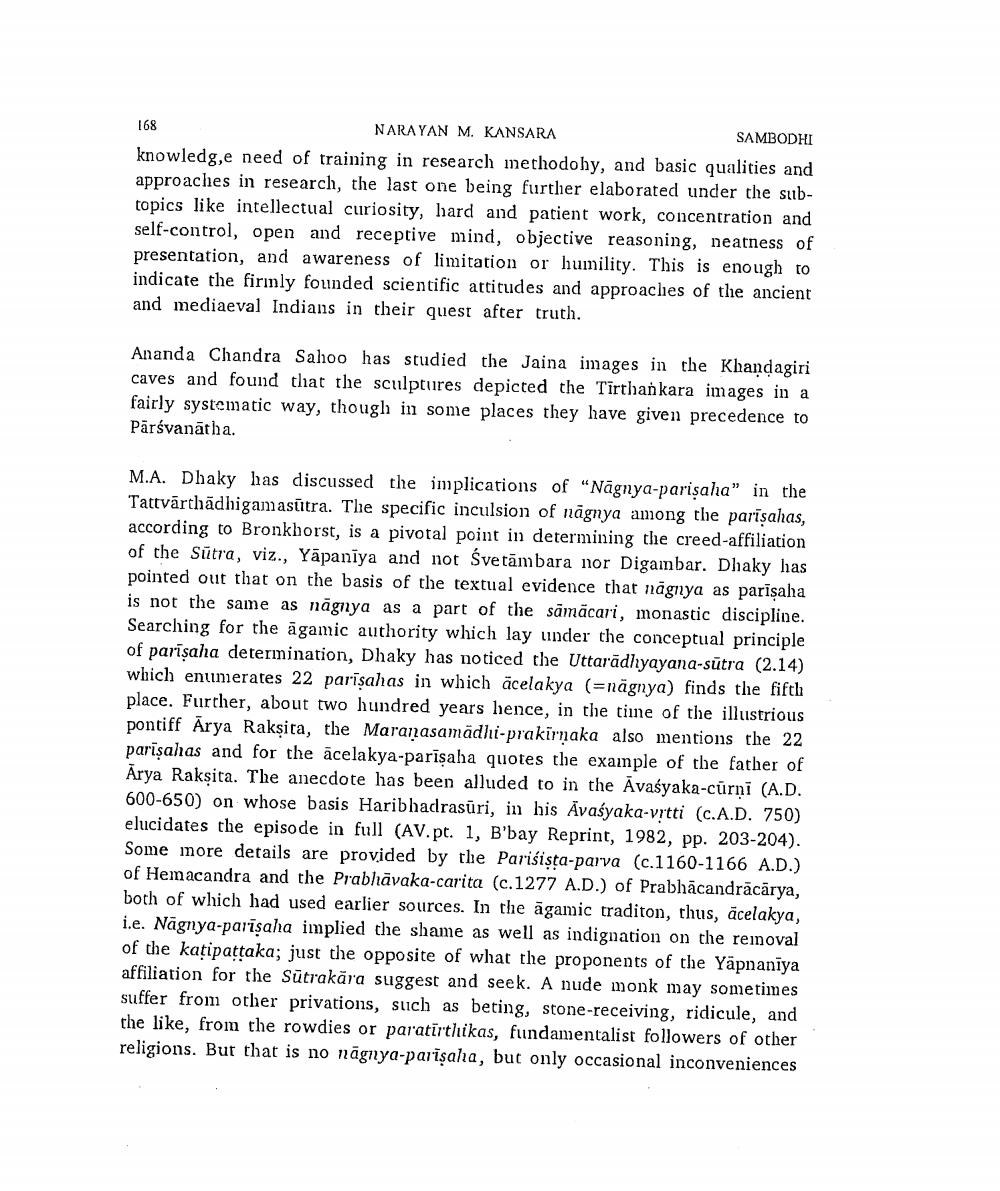________________
168 NARAYAN M. KANSARA
SAMBODHI knowledg,e need of training in research methodohy, and basic qualities and approaches in research, the last one being further elaborated under the subtopics like intellectual curiosity, hard and patient work, concentration and self-control, open and receptive mind, objective reasoning, neatness of presentation, and awareness of limitation or humility. This is enough to indicate the firmly founded scientific attitudes and approaches of the ancient and mediaeval Indians in their quest after truth.
Ananda Chandra Sahoo has studied the Jaina images in the Khandagiri caves and found that the sculptures depicted the Tirthankara images in a fairly systematic way, though in some places they have given precedence to Pārsvanātha.
M.A. Dhaky has discussed the implications of "Nāgnya-parişaha" in the Tattvārthādhigamasutra. The specific inculsion of nāgnya among the parīşahas, according to Bronkhorst, is a pivotal point in determining the creed-affiliation of the Sūtra, viz., Yāpaniya and not svetambara nor Digambar. Dhaky has pointed out that on the basis of the textual evidence that nägnya as parīşaha is not the same as nägnya as a part of the sāmācari, monastic discipline. Searching for the āgamic authority which lay under the conceptual principle of parísaha determination, Dhaky has noticed the Uttarādhyayana-sūtra (2.14) which enumerates 22 parişahas in which acelakya (=nägnya) finds the fifth place. Further, about two hundred years hence, in the time of the illustrious pontiff Arya Rakṣita, the Maranasamadhi-prakirnaka also mentions the 22 parişahas and for the acelakya-parişaha quotes the example of the father of Ārya Raksita. The anecdote has been alluded to in the Avaśyaka-cūrni (A.D. 600-650) on whose basis Haribhadrasūri, in his Āvaśyaka-vitti (C.A.D. 750) elucidates the episode in full (AV.pt. 1, B'bay Reprint, 1982, pp. 203-204). Some more details are provided by the Parisista-parva (c.1160-1166 A.D.) of Hemacandra and the Prabhāvaka-carita (c.1277 A.D.) of Prabhācandrācārya, both of which had used earlier sources. In the agamic traditon, thus, acelakya, i.e. Nāgnya-parīşaha implied the shame as well as indignation on the removal of the katipattaka; just the opposite of what the proponents of the Yāpnaniya affiliation for the Sūtrakāra suggest and seek. A nude monk may sometimes suffer from other privations, such as beting, stone-receiving, ridicule, and the like, from the rowdies or paratirthikas, fundamentalist followers of other religions. But that is no nāgnya-parīşaha, but only occasional inconveniences




